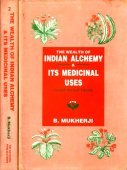Herodotus: 1 definition
Introduction:
Herodotus means something in the history of ancient India. If you want to know the exact meaning, history, etymology or English translation of this term then check out the descriptions on this page. Add your comment or reference to a book if you want to contribute to this summary article.
India history and geography
Source: archive.org: Journal of the Madras University, vol.28 (history)Herodotus is the name of one of the great historians of Ancient Greece, who lived during the same period of the Tamil Grammariam Tolkappiyar.—The age of Agastiyar, the author of the first grammar in Tamil, is generally placed in the VI century B.C. and Tolkappiyar, whose grammar is still extant, is generally considered his devout pupil. In Greece this was exactly the period of her great dramatists and playwrights, Aeschylus, Sophocles and Euripides, her historians, Herodotus, Thucydides and Xenophon and her philosophers, Socrates, Plato and Aristotle though the last belongs to the IV century B.C. This was again the period of the rising art of the Greeks, which reaches its highest water-mark in the period following the Persian wars, the well-known age of Pericles.

The history of India traces the identification of countries, villages, towns and other regions of India, as well as mythology, zoology, royal dynasties, rulers, tribes, local festivities and traditions and regional languages. Ancient India enjoyed religious freedom and encourages the path of Dharma, a concept common to Buddhism, Hinduism, and Jainism.
See also (Relevant definitions)
Full-text: Onomacritus, Thucydides, Khufu, Pani, Sesostris, Aristotle, Aeschylus, Sophocles, Plato, Euripides, Xenophon, Socrates, Narmer, Cinnamomum zeylanicum, Cinnamon.
Relevant text
Search found 25 books and stories containing Herodotus; (plurals include: Herodotuses). You can also click to the full overview containing English textual excerpts. Below are direct links for the most relevant articles:
Popular Literature in Ancient Egypt (by Alfred Wiedemann)
Kathasaritsagara (the Ocean of Story) (by Somadeva)
Preface to volume 5 < [Prefaces]
Appendix 5.2 - The Origin of the Story of Ghaṭa and Karpara < [Appendices]
The history of human sacrifice < [Notes]
Animal Kingdom (Tiryak) in Epics (by Saranya P.S)
Buddhist records of the Western world (Xuanzang) (by Samuel Beal)
Chapter 15 - Country of Ho-li-sih-mi-kia (Khwarazm) < [Book I - Thirty-Four Countries]
Chapter 16 - Country of Ki-shwang-na (Kesh) < [Book I - Thirty-Four Countries]
Chapter 22 - Country of Kiu-sa-ta-na (Khotan) < [Book XII - Twenty-two Countries]
The civilization of Babylonia and Assyria (by Morris Jastrow)
Part II < [Chapter I - Excavations At Babylonian And Assyrian Sites]
Part III < [Chapter I - Excavations At Babylonian And Assyrian Sites]
Part XII < [Chapter IV - The Gods Of Babylonia And Assyria]
Historical Elements in the Matsya Purana (by Chaitali Kadia)
Historical Elements (Introduction) < [Chapter 2 - History and Historical elements]
Historical Elements (3): Foreign Accounts < [Chapter 2 - History and Historical elements]
The concept of Bhāratavarṣa < [Chapter 4 - Geographical history in the Matsya-Purāṇa]
Related products
